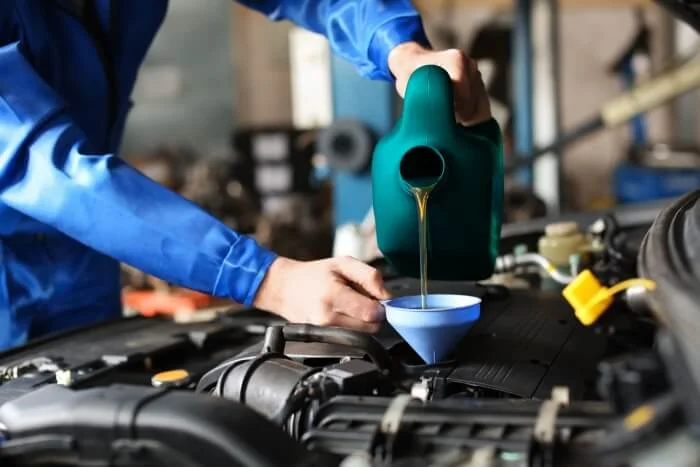
Is engine oil flush really necessary for your car?
The short answer to his question is Yes! It is done to remove all the dirt and debris that stick on the wall of the engine to enhance the performance and the life of an engine.
In this comprehensive guide, we will discuss the signs that indicate your car needs engine flush and the benefits you reap from it.
What is an Engine Oil Flush?
An engine oil flush is a specialized maintenance procedure designed to remove sludge, dirt, and contaminants that accumulate in your engine over time.
It differs from a standard oil change because it involves using a chemical solution to thoroughly clean the engine’s internal components.
This process helps maintain the engine’s performance and prolong its lifespan.
Signs Your Car Needs an Engine Oil Flush
How do you know if your car is due for an oil flush? Look out for these signs:
- Poor Fuel Economy: A noticeable drop in fuel efficiency could be a sign of dirty engine oil, which makes the engine work harder and consume more fuel.
- Engine Knocking: If your engine produces a knocking or tapping sound, it may be struggling due to oil contamination.
- Reduced Performance: Sluggish acceleration and a decrease in power output can be attributed to oil-related issues.
- Frequent Oil Change: If your car engine is required to change the engine oil then the recommended km frequently.
If you notice any of these symptoms, it’s time to consider an engine oil flush.
Benefits of an Engine Oil Flush
Performing an engine oil flush offers several advantages:
- Improved Engine Performance: Clean oil ensures smoother engine operation, leading to better acceleration and overall performance.
- Prolonged Engine Life: A cleaner engine experiences less wear and tear, which can extend its lifespan.
- Enhanced Lubrication: Clean oil provides better lubrication, reducing friction and heat generation.
- Cools the engine: After flushing out all debris and dirt from the engine, the new oil will be able to lubricate all the components much better and hence be able to cool the engine for a longer time.
- Reduced Engine Wear: Minimizing contaminants helps prevent premature engine wear.
How to Perform an Engine Oil Flush?
If you’re considering a DIY engine oil flush, follow these steps:
- Gather Your Tools: You’ll need an oil flush solution, a wrench, an oil filter wrench, and a drain pan.
- Prepare the Engine: Warm up your engine, which helps the oil flow more easily. Then, locate the oil drain plug and the oil filter.
- Drain the Old Oil: Position the drain pan under the oil pan, remove the drain plug, and let the old oil drain completely.
- Add the Flush Solution: Pour the engine oil flush solution into the oil fill cap.
- Run the Engine: Start the engine and let it idle for about 10-15 minutes to circulate the flush solution.
- Drain the Flush Solution: After the engine has run, drain the flush solution as you did with the old oil.
- Replace the Oil Filter: Install a new oil filter, and tighten it with an oil filter wrench.
- Refill with Fresh Oil: Add the recommended amount and type of fresh engine oil.
- Check the Oil Level: Ensure the oil level is correct, and check for any leaks.
Give Your Engine a Fresh Start Now
Are you ready to unlock the full potential of your car’s engine?
Don’t wait for signs of trouble to escalate—take proactive steps to ensure your vehicle’s longevity and performance.
Schedule your engine oil flush repair with us today, and experience the difference in your ride.
Why Automovill?
✅ Super Skilled Mechanics
✅ Super Efficient Work
✅ 100% Genuine Spare Parts
✅ Free Pick & Drop
Keep your car running smoothly and efficiently by giving it the care it deserves.
